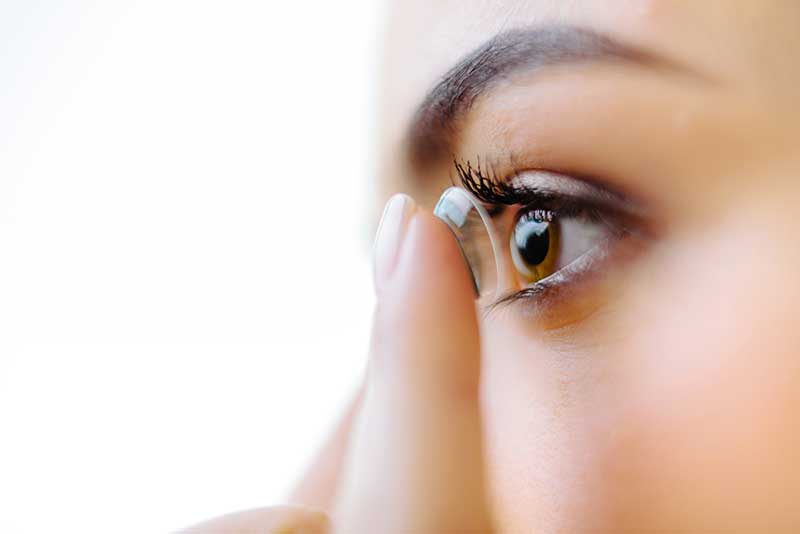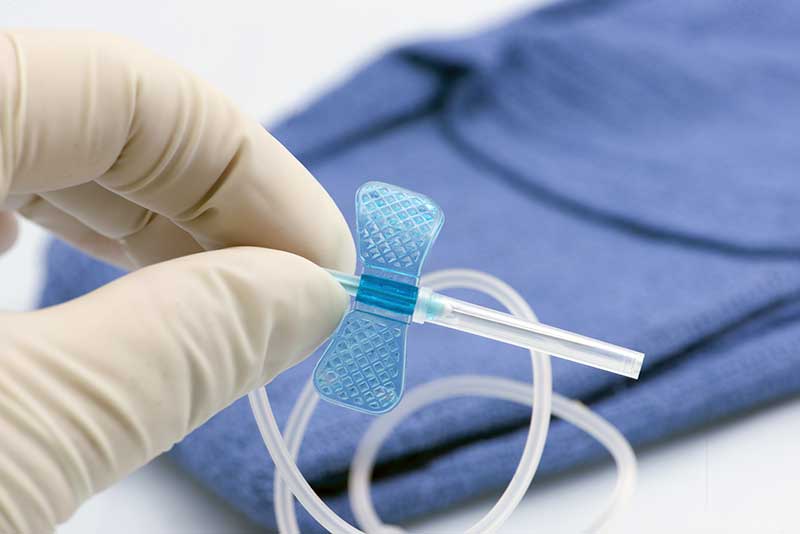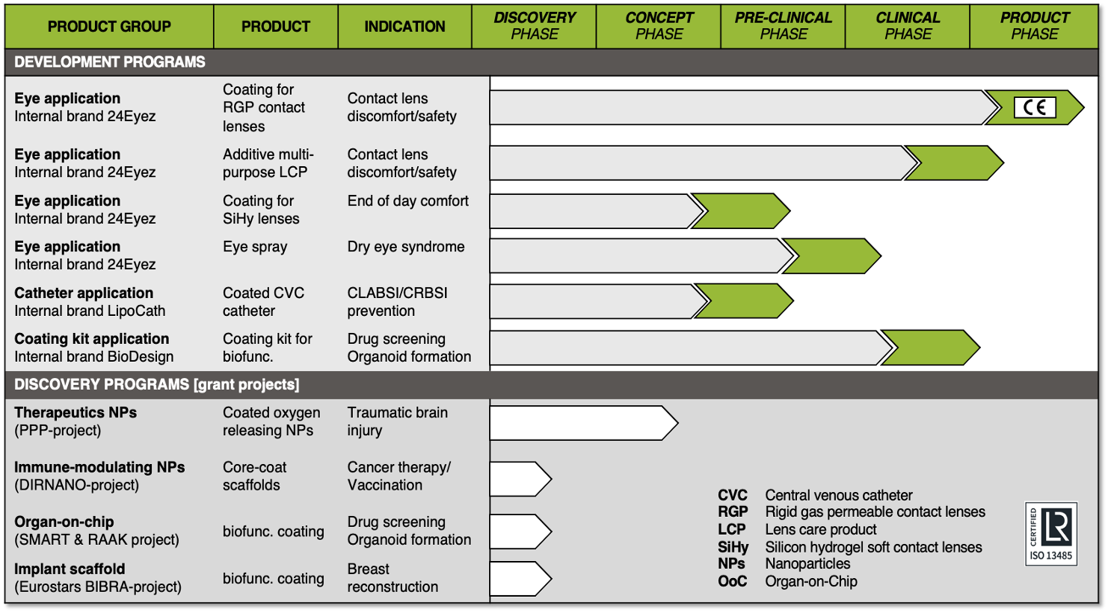Pipeline
Pipeline
LipoCoat contact lens products are aimed at improving comfort and safety properties of the contact lens materials by increasing surface wetting, increasing surface lubricity and reduce surface contamination by reducing deposits and bacterial build-up on the lens material. We develop surface coatings that can be adapted for use on rigid gas permeable contact lenses, soft contact lenses and can be provided as an additive to lens care solutions. Contact lens coating products are prepared for CE-clearance.
LipoCoat catheter products provide a passive and drug-less solution to reduce biofilm formation, improve blood compatibility and prevent tissue damage. LipoCoat coatings can be applied without the need for curing steps, polymerization or UV treatment. Process and thickness control is programmed into our molecular design. In addition, no harsh chemicals, pharmaceuticals or active compounds are processed into the final products. Catheter coating products for urology and cardiovascular catheters are in development.
The LipoCoat coating platform can be adapted to display a wide-range of bio-active compounds. These can provide additional surface properties to trigger specific biological processes in vivo or in vitro. Osseointegration improvement using LipoCoat coatings on orthopedic implants are under investigation.

Eye care
Contact lenses
Contact lenses are commonly used medical devices to manage refractive errors. It is estimated that approximately 150 million people wear contact lenses worldwide. Several complications are associated with wearing contact lenses such as discomfort, eye infections, dry eyes and corneal neovascularization.
LipoCoat contact lens products are aimed at improving comfort and safety properties of the contact lens materials by increasing surface wetting, increasing surface lubricity and reduce surface contamination by reducing deposits and bacterial build-up on the lens material. LipoCoat develops surface coatings that can be adapted for use on rigid gas permeable contact lenses, soft contact lenses and can be provided as an additive to lens care solutions.
Eye spray
To combat dry eyes, which are in most cases caused by a deficiency or instability of the lipid layer of the tear film, different eye spray technologies are available on the market. Currently available lipid-based eye-sprays are based on the phospholipid soy-lecithin encapsulated within microscopic spherical liposomal vesicles. It has been shown that the use of liposomal eye spray significantly improves the thickness of the lipid layer and the tear film stability. Compared to aqueous artificial tear ocular lubricants, liposomal eye sprays focus more on symptom relief and require frequent application.
LipoCoat’s proprietary coating platform provides the possibility of negating the negative properties of soy-lecithin such as the pungent smell, and markedly amplifying the positive effects. It is suggested that LipoCoat’s lipids could elicit an anti-inflammatory response, and that they can be combined with other beneficial compounds.
Catheters
Catheters are one of the leading causes of Healthcare Associated Infections (HAIs). LipoCoat catheter products provide a passive and drug-less solution to reduce biofilm formation, improve blood compatibility and prevent tissue damage. LipoCoat coatings can be applied without the need for curing steps, polymerization or UV treatment. Process and thickness control is programmed into our molecular design. In addition, no harsh chemicals, pharmaceuticals or active compounds are processed into the final products. Catheter coating products for urology and cardiovascular catheters are in development.

Drug discovery
R&D, especially in the areas of pharma and (stem) cell research require specific surface functionality for either cell culture or drug-screening analysis.
Nowadays, careful control of cell culture conditions in R&D is becoming ever more important. Especially in the stem cell field, there is a need to design tuneable cell culture surfaces. For example, labs that routinely culture embryonic stem cells demand non-fouling and non-adsorbing surfaces to ensure proper cell growth.
R&D, especially in the areas of pharma and (stem) cell research require specific surface functionality for either cell culture or drug-screening analysis. Careful control of cell culture conditions in R&D is becoming more important and it is critical to achieve non-fouling and non-adsorbing surfaces.
LipoCoat coatings offers the possibility of being engineered to display and include different proteins and other bio-actives to impart a specific bioactivity, rather than being a (bio)inert surface. For example, if you wanted to activate other cells such as stem cells or immune cells, detect certain proteins or to encourage tailored cell adhesion or even capture molecules LipoCoat coatings can be used. A common problem in drug screening applications is drug adsorption to the wells plates which causes compound loss and makes the screenings less reliable. Therefore, non-fouling and non-adherent are equally important for stem cell and drug screening applications6.
LipoCoat’s technology enables the design and preparation of bio-active surfaces through supramolecular or chemical modification. Therefore low background, cell-compatible surfaces and, if so desired, spatiotemporal incorporation of biochemical cues are accessible, improving or enabling new types of analysis.
Permanent implants
The LipoCoat coating platform can be adapted to display a wide range of bio-active compounds. These can provide additional surface properties to trigger specific biological processes in vivo or in vitro. The application of LipoCoat coating technology can help to improve implant integration into the patient’s body by attracting different cell types and supporting cell differentiation e.g. by osseointegration of orthopedic implants or adipose differentiation for soft tissue repair.


